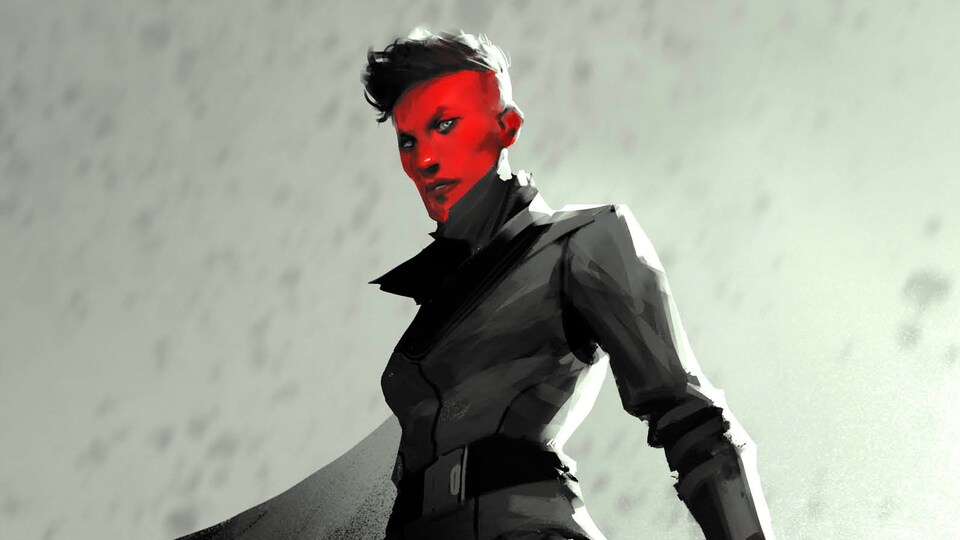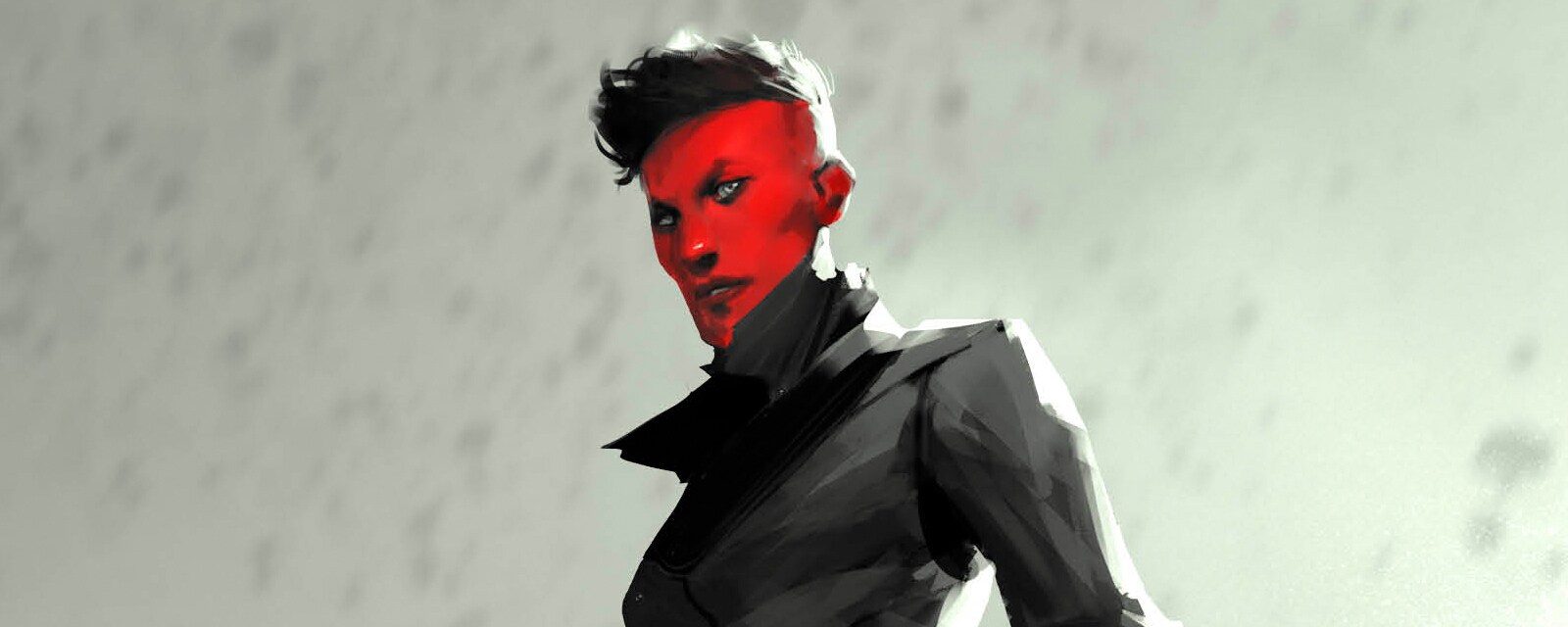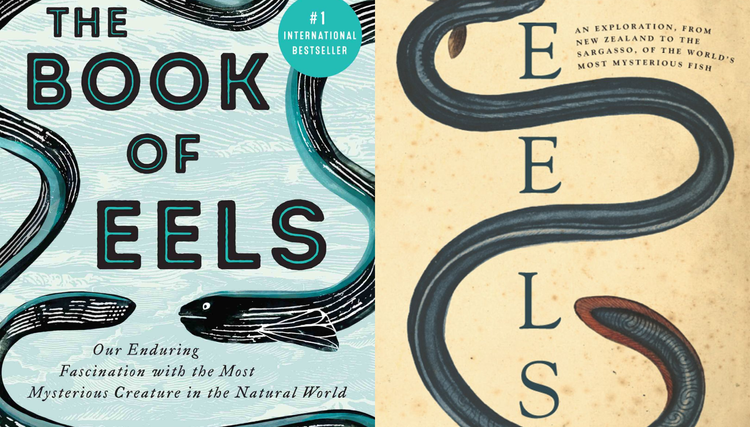
Book Review | Inquisitor: Rise of the Red Blade

Author: Delilah S. Dawson
Publisher: Del-Rey
Length: 368 pages
EE Critic Score: 8/10
Inquisitor: Rise of the Red Blade is a novel by Delilah S. Dawson, one of Star Wars's new stable of regular writers. It tells the story of Iskat Akaris, a disillusioned Jedi who becomes a volunteer to serve in the Imperial Inquisitorius following the fall of the Order. Rather than serve as a story about a sequence of events, it serves as a character study, looking at a fallen Jedi's tragic life. This makes it essentially similar to the story of Anakin Skywalker, true, but only broadly: Anakin's fall is a crisis brought on by a deep fear of losing loved ones, Iskat's is more a slow build-up of bitterness. The book poses a lot of interesting questions about how much villainy is a result of a person being failed by their society and how much is just a villain being a bad seed; these aren't new ideas but they typically aren't explored this thoroughly in fallen Jedi stories. This is the best character-driven book Star Wars has had since the Alphabet Squadron trilogy, though it's not as good as those, due to a somewhat weak ending.

Synopsis
Iskat Akaris is a Jedi padawan under Sember Vey, a protégée of the archivist Jocasta Nu tasked chiefly with seeking out Force-related artifacts. Iskat doesn't dislike her master, but they aren't very close. Vey isn't sure how to both teach an apprentice and tend to her other duties; Iskat wishes to please her master but seems unable to find an effective way to do so.
Upon returning to the Temple with their latest find, Vey and Iskat are summoned to an emergency meeting. Separatists have captured Obi-Wan Kenobi on Geonosis, and the Jedi present at the Temple are mobilizing to rescue him. When the Jedi arrive, Iskat and several other padawans are sent to disable an unattended cannon while their masters slip into the stands of the arena where Kenobi, his padawan Anakin Skywalker, and Senator Padmé Amidala are to be executed. The padawans are ambushed, and Iskat goes into a fury cutting Geonosians down. While fighting, she feels a deeper connection to the Force than ever before, but afterward, she is horrified to have killed people.
As the battle breaks out in the arena between the Separatist army and the Jedi, more deaths occur, Jedi and Geonosian. Among the slain Jedi is Vey, whom Iskat finds deliriously apologizing to "Feyra" as she dies. Iskat is pulled away from her master's body as the Jedi retreat. In the aftermath of the battle, Iskat is assured by other Jedi that the fallen are not dead, but one with the Force. She is unconvinced of this, and is further troubled by the idea that she could have saved more Jedi had she been in the arena, but only because her talents in the Force seem to be in the art of killing.
Rather than be assigned a new master, Iskat is knighted, along with Skywalker and several other padawans whose experience at Geonosis had been determined a suitable substitute for the Jedi Trials. She is teamed with another new knight, Tualon Yaluna, and an older knight in command of a platoon of clones, and set to covertly disable a droid factory on a Separatist world. The mission quickly goes wrong when the older knight dies and Iskat gets ambushed. She improvises, destroying the factory but also dealing collateral damage, killing civilians, and revealing Republic involvement. The Jedi Council reprimands her for breaking from her orders and reassigns her away from the field; she is now to help train Jedi initiates at the Temple. She accepts the assignment but privately recognizes it as a punishment.
Iskat finds she does have some aptitude for teaching and enjoys the company of her students. In her spare time, she practices lightsaber dueling with an old friend of her master's and researches "Feyra", whom she finds to be a Jedi who left the Order. Feyra's species is unknown to the Archives, but she seems to be the same unknown species to whom Iskat belongs: red-skinned, long-fingered, and with two hearts.
Iskat's presence at the Temple gives her the opportunity to attend the long series of funerals for the Jedi killed in the war. She notes how each funeral follows the same script, and sees each death as a terrible waste. She feels that she should be out fighting, that she would survive where others are dying.
As the war goes on, and the ranks of the Jedi grow thinner, the Council eventually summon Iskat for battle deployment. She is again paired with Tualon. On their first mission, to rescue a Separatist defector, she breaks with Tualon's plans, risking the mission on a hunch. The risk pays off, but Tualon is irked. The defector recognizes Iskat's species and is able to name her likely homeworld.
Iskat and Tualon are together on a later mission when Order 66 is given. Sidious has Iskat brought into custody rather than killed. She is held captive by the Grand Inquisitor, who eventually tells her that the Jedi attempted to overthrow Palpatine and offers her a place in the Inquisitorius hunting down the surviving Jedi. She accepts willingly.
She begins training with the other inquisitors, all of whom seem to hate her and each other. One of these is Tualon, who was captured and tortured to turn him to the Imperial cause. The inquisitors compete for the attention and approval of the Grand Inquisitor and of Darth Vader, the Sith Lord who serves as the Emperor's enforcer and whom Iskat does not recognize as Anakin Skywalker. Initially, Iskat isn't sent on missions to find living Jedi but to find Jedi artifacts, as she did with her master before the war. While in the field, she takes a detour to visit her homeworld. There, she finds her family. Feyra was her mother; she herself was raised as a Jedi before leaving the order and returning home, where she had Iskat. After Iskat exhibited Force ability, Feyra called for a Jedi friend, Sember Vey, to take her to the Temple. Feyra disappeared shortly after. After hearing this, Iskat leaves, though she resolves to return after the surviving Jedi are all killed and her task as an Inquisitor is complete.
Iskat is finally sent after living targets when news comes of a bounty hunter with a dungeon full of captive Jedi. She goes to find her old dueling instructor and his apprentice. She kills the padawan easily, but the master puts up a serious fight. During the duel, he finally reveals the backstory that he and Vey had kept from Iskat: her mother had been deeply unhappy as a Jedi and had been no happier when she returned home. When Iskat manifested Force sensitivity, Feyra reached out to Vey and made her promise to look after her daughter; she took her own life shortly after. Iskat realizes that her relationship with her master came not of the will of the Force but out of Vey's sense of obligation toward a dead friend. The Jedi is eventually beheaded by Iskat, who also kills the bounty hunter for good measure. Returning to the Imperial palace, she takes a new name: the Thirteenth Sister.
In the epilogue, Iskat, Tualon, and other inquisitors accompany Darth Vader to assassinate former Jedi councilor Eeth Koth. Following the mission, Iskat and Tualon begin speculating what will happen to the Inquisitorius once all the Jedi are dead. They figure that Vader is simply saving them to be killed last. Vader, sensing their treachery and their attachment to one another, abruptly attacks them, chasing them through the speeder traffic of Coruscant. The two manage to knock him through the roof of a building. Tualon tells Iskat that they're finally free to run away together. Iskat agrees, but she wants to make sure Vader is dead first. They find him badly hurt but alive. As Iskat prepares to deliver the killing blow, Vader seizes both of them with the Force and compels them to impale each other with their lightsabers.


Artwork of Tualon Yaluna and Iskat Akaris from a special edition of Inquisitor: Rise of the Red Blade | Art by Anthony Jones
Analysis
Iskat Akaris was technically created by Charles Soule and Giuseppe Camuncoli for the 19th and 20th issues of their Darth Vader comic, which are retold in the book's epilogue. But it's here in Dawson's book that she gets a name and a story, so Dawson is the character's true creator in my estimation. She seems to be Star Wars's go-to author for fleshing out briefly glimpsed characters, having previously written an origin story of sorts for Captain Phasma. That book was...odd, not a bad read but hampered by the fact that rather than telling the story of Phasma it told the story of someone telling the story of Phasma as told to her by someone else. This, I take it, was meant to make Phasma feel legendary, but it put a lot of distance between the reader and the main character. That's not at all the case here; this book is the most in-close character study Star Wars has had for some time.
One thing I would like to make clear is that, while the book is titled "Inquisitor", it largely focuses on Iskat's time during the Clone Wars, only getting to her role as an Inquisitor during the rise of the Empire in the last third of the book. It's a "villain's journey" similar to Anakin's story in the Prequels; most of the pages are laying the groundwork for the epilogue while exploring what else might lead a Jedi to the Dark Side besides fear of loss or a lust for power.
Iskat's break with the Jedi is told in a very thread-the-needle way. Dawson doesn't tell a story about how the shortcomings of the Jedi Order are fully responsible for creating an instrument of their own destruction, but she also doesn't let the Order completely off the hook. Iskat herself is shown to be rather adept at rationalizing her own actions and rather inept at receiving correction. Throughout the book, you feel her pain and confusion, but Dawson never uses Iskat's personal hardships as an excuse for her actions, only an explanation.
The Order primarily fails Iskat by assigning her to Sember Vey. As the book is entirely from Iskat's perspective, and as Iskat takes such uncharitable views of everyone, it can be difficult to truly assess other characters, but, even so, it's obvious Vey was a poor teacher. She didn't impart many Jedi teachings to Iskat, beyond memorized mantras. She also didn't seem to encourage Iskat to seek instruction or to admit mistakes, which are the ways people better themselves. The Order also somewhat fails Iskat in being a culture centered on breaks with the past. The Jedi generally don't know their families, and Iskat doesn't even know her species. It's Vey who deliberately lies to Iskat about not knowing where she came from, but the broader Order discourages her from investigating her own origins.
But Iskat isn't blameless here. Dawson uses the persistent mismatch between her internal monologue and her spoken dialogue to show Iskat as a fundamentally dishonest person. The opening line of the book sets up that she is primarily concerned with pleasing people, not with truly doing the right thing or with telling them unpleasant truths. This serves as the root of her troubles. She conceals her concerns over her apparent bent toward the violent side of the Force because she fears that any Jedi she told would think less of her. (One wonders whether she knew that Mace Windu, who she perceives as a main persecutor, also had a violent bent to his talents, which he had also struggled to know what to do with in his youth.) When she's called before the Council after being kept back at the Temple, she claims to have seen her error in blowing up the factory against orders, even though she doesn't see anything wrong with what she did, as evidenced by the way she continues to take rash, unilateral action on missions. The one scene where Iskat gives an honest statement is when she turns down a position in the Jedi Archives. Even then she's concealing her feelings that she's most gifted in combat.
Iskat also struggles to see other people as fully realized people like herself. She's horrified by the death toll at Geonosis and further on in the war, but she seems to feel like she's the only one, simply because other Jedi, many of them older than her and more accustomed to seeing those close to them die, can find solace in Jedi traditions, while she can't; that other Jedi are privately disturbed doesn't seem to cross her mind. This further leads to feelings of inadequacy as a Jedi and isolation from the Order, which further leads Iskat to presume the worst in those around her, which further leads them to avoid her. That's the tragedy of Iskat Akaris: she desperately needs, even wants, the community which she seals herself off from.
She does have one friend, a Temple maintenance worker who she later finds was an agent for Palpatine, and one Jedi who offers to mentor her, but only because Mace Windu asked him to. Obi-Wan Kenobi has some kind words for her at her knighting, but she never sees him after that. Iskat has no one in her life actually personally interested in her, or at least no one whom she recognizes as such.
As usual, behind dark happenings, we find Darth Sidious. He uses the maintenance worker and his own visits to the Temple in his role as Chancellor to exacerbate Iskat's growing split with the Jedi. But beyond that, the war he orchestrates brings out the worst in the Galaxy, the Jedi Order included. A need for generals leads to Iskat being knighted before she is ready, put into a leadership role for which she is ill-suited, and used, as soldiers are, toward other's ends, in ways she would not have been had there not been a war.
After Iskat made her break with the Order, my estimation of this book dipped a bit. Iskat's story up to the start of Part 3 pretty clearly lays out a character primed to leave the Jedi, but not one primed to start killing Jedi. Her turn toward the Sith seems to come as a result of authorial fiat rather than as a credible consequence of her earlier experiences, and the final chapters of the book suffer from this.
I think that if somehow Iskat had uncovered her history earlier that might have provided the needed motivation. She could get the notion that the Jedi drove her mother to her death, then tried to cover the matter up. Maybe Iskat wonders how many other such secrets the Jedi are hiding. That could be a credible motive for Iskat's decision that the Jedi must be destroyed. In the book, she finds out nothing but her mother's name and that of her homeworld by the time she joins the Inquisitorius. Alternatively, don't have Iskat join the Inquisitorius willingly; have her coerced into it like the others. That's not as rich a story but it would at least make a bit of sense.
(I should note that in terms of Iskat's fall paralleling that of Anakin Skywalker, the missing steps between "The Jedi aren't for me" and "kill the Jedi" are present, or rather absent, in both of their stories.)
The other weak point in the book, which is present throughout but most prominent in Part III, is Iskat's relationship with Tualon. Soule's comic depicts them as romantically involved. Dawson must thus set the relationship up in this prequel story. But her story is about Iskat's isolation and connecting her to Tualon right away would undermine that. What she does is set up that Iskat has a sort of infatuation with Tualon, which sours into resentment once she is placed under his command, which turns into rivalrous hatred when they're set against one another as novice Inquisitors, which (presumably) turns back into romance as they share missions under Vader. That last step, arguably the key step, happens off-page between the final chapter and the epilogue. You can tell what happened, but only in a vague, sketchy way. It's like how you can look at step-by-step directions of a trip someone took; you'd understand how they'd arrived, but you wouldn't have experienced the journey.
Honestly, the whole epilogue could have been cut. It's a direct re-statement of Soule's story; it doesn't tie deeply to the rest of the book; and the close of the final chapter would have worked well as the end of the book.
Anthony Jones's cover art is very striking, although it perhaps promises more action and less anxious internal monologuing than the book delivers. I think that titling the book either just Inquisitor or better yet just Rise of the Red Blade would have been preferable to colon-splicing those two together, but that's true of a lot of books, and it's probably that the people at Del Rey who made that call know more about what makes for a successful title than I do.

Recommendation & Rating
This book is a well-written, well-conceived character study of a person falling to the Dark Side that manages to differentiate itself from the familiar story of the fall of Anakin Skywalker. It's the best villain-perspective book I've read besides Thrawn. It's also a very accessible book; it doesn't require reading Soule's Vader comic, or anything beyond a general familiarity with the Clone Wars and the Inquisitorius to be enjoyed. I will say that anyone looking for a deeper look at the Inquisitorius than what we've had so far may come away disappointed.
The ending of the book is not as strong as the rest of it, but It's still a satisfying conclusion to the story. By the end, the reader doesn't want to see Iskat Akaris live happily ever after, but they would like to see her suffering end.
I'd recommend Inquisitor: Rise of the Red Blade to Star Wars fans willing to read a sour, tragic story told well. I rate the book:
8
/10 — Without significant negative worth. Able to be recommended to the interested without reservation.







Member Commentary